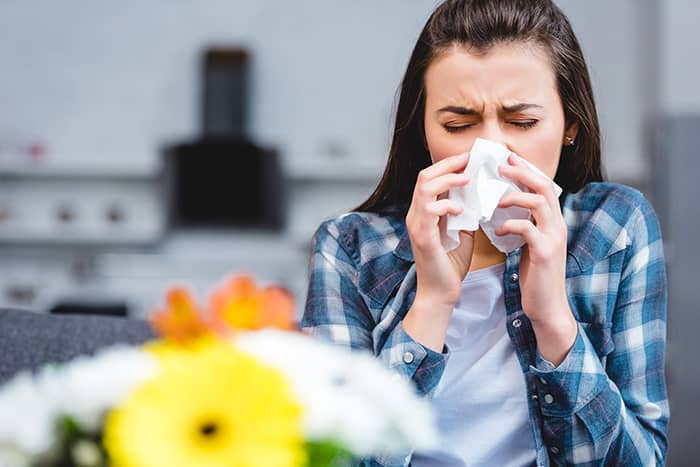Allergies can be a major hindrance to everyday life. Allergies in the home can be caused by a variety of factors, including dust, pet dander, mildew, and pollen. In order to allergy-proof your home, it is important to identify the sources of allergies and take the necessary steps to eliminate or reduce them.
What is my house is causing allergies?
The sources of allergies in a home can vary, but some common culprits include dust mites, pet dander, mold, and pollen. Dust mites are microscopic creatures that feed on dead skin cells and can be found in carpets, bedding, and upholstered furniture. Pet dander can come from dogs, cats, and other animals and can be found on furniture, carpets, and clothing. Mold thrives in damp environments and can be found in areas such as bathrooms, basements, and kitchens. Pollen can enter a home through open windows and doors, and can also attach itself to clothing and pets.
Do air purifiers remove allergens?
Air purifiers can be effective in removing allergens from the air. HEPA (high-efficiency particulate air) filters are capable of trapping particles as small as 0.3 microns, which includes many allergens such as dust, pet dander, and pollen.
How do I keep my house dust-free from allergies?
To keep your house dust-free, regular cleaning is key. Dust and vacuum frequently, paying particular attention to areas such as carpets, upholstered furniture, and bedding. Use allergen-proof covers on pillows and mattresses to prevent dust mites from getting inside. Wash bedding, curtains, and other fabrics regularly in hot water to kill dust mites and other allergens. Use a damp cloth when cleaning surfaces to prevent dust from becoming airborne.
How do I make my house allergy-proof?
Making your house allergy-proof involves a combination of identifying and reducing allergens, and taking steps to improve indoor air quality. Some steps you can take include:
- Identifying and removing allergens: This involves regular cleaning and dusting, removing carpets and upholstered furniture, and keeping pets out of certain areas of the home.
- Improving indoor air quality: This involves using an air purifier with a HEPA filter, improving ventilation in the home, and using a dehumidifier to reduce moisture.
- Using allergy-friendly products: This involves using hypoallergenic bedding, avoiding scented candles and air fresheners, and using cleaning products that are free from harsh chemicals.
Controlling allergens with clean space – Video
What kills allergens in the air?
Allergens in the air can be killed by using an air purifier with a HEPA filter, which can trap particles as small as 0.3 microns. Another effective way to kill allergens is to use UV-C light air purifiers, which can kill mold, bacteria, and viruses.
What bedding is good for allergies?
Hypoallergenic bedding is a good choice for those with allergies. This type of bedding is made from materials that are less likely to cause an allergic reaction, such as organic cotton, bamboo, or microfiber. Hypoallergenic bedding is also designed to prevent the accumulation of allergens such as dust mites
What kills allergens in the air?
There are several ways to kill allergens in the air:
- Air purifiers: Air purifiers are effective in removing allergens from the air. They have filters that trap allergens, such as pollen, pet dander, dust mites, and mold spores. Some air purifiers also have UV-C lights that kill germs and bacteria.
- Dehumidifiers: Dehumidifiers reduce the humidity levels in your home, which can prevent the growth of mold and mildew. They also reduce dust mites, which thrive in humid environments.
- HEPA filters: HEPA filters are designed to trap small particles, such as allergens, in the air. They are commonly used in air purifiers and vacuum cleaners.
- Ventilation: Proper ventilation is essential to keep the air in your home clean and fresh. Open windows and doors to allow fresh air in, or install an exhaust fan in your bathroom and kitchen to remove moisture and prevent the growth of mold.
What are the symptoms of house dust mite allergy?
The symptoms of house dust mite allergy include:
- Sneezing
- Runny or stuffy nose
- Itchy or watery eyes
- Nasal congestion
- Postnasal drip
- Itchy skin or rash
- Cough
- Wheezing or difficulty breathing
- Swelling of the face, tongue, or throat (in severe cases)
If you experience any of these symptoms, it is important to see a doctor for a proper diagnosis and treatment.
What bedding is good for allergies?
Bedding made from hypoallergenic materials, such as cotton, bamboo, or microfiber, is good for allergies. These materials are breathable and help to wick away moisture, which can prevent the growth of dust mites and mold.
It is also important to use allergy-proof pillows and mattress covers to prevent dust mites from entering your bedding. These covers are made from tightly woven fabrics that prevent allergens from passing through.
Is there a house spray for allergies?
There are several types of house sprays that can help to reduce allergens in your home. Some common types include:
- Anti-allergen sprays: Anti-allergen sprays contain enzymes that break down allergens, such as pet dander, dust mites, and pollen.
- Essential oil sprays: Essential oils, such as eucalyptus, lavender, and tea tree oil, have natural antimicrobial properties that can kill germs and bacteria in the air.
- Deodorizing sprays: Deodorizing sprays can help to neutralize unpleasant odors in your home, which can be caused by allergens, such as pet dander and mold.
It is important to read the labels carefully and choose a spray that is safe for use around people and pets. Some sprays may contain harsh chemicals that can irritate your respiratory system or trigger allergic reactions.





